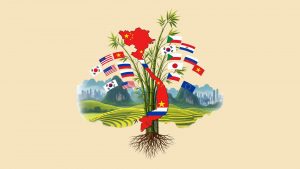Tourism is a vital sector of the Scottish economy, contributing £6 billion a year and supporting around one in every twelve jobs. Tourists prop up not only hotels and restaurants but everything from airports and airlines to railways and coach operators, as well as fast-moving consumer goods. Before 2020, it was one of Scotland’s fastest growing industries.
Yet tourism is facing challenges from every direction. Brexit knocked the bottom out of the industry, leading to chronic staff shortages and supply chain issues. Leaving the Schengen Area has discouraged long-distance travellers, particularly from East Asian countries. The Covid pandemic essentially shut down the industry for two years, and cut Scotland off from the impressive spending power of the Chinese middle classes. Coming so close together, Brexit and Covid were a devastating one-two punch for the industry, and it is critical that we work to recover from them.
Frustratingly, many of the biggest challenges to tourism are self-imposed: or rather, the result of policies passed in Westminster. The customers exist, they have money to spend, and they want to come – but, despite throwing cash at the industry during Covid bailouts, it often seems as if the UK doesn’t want to help. From a lack of investment in infrastructure to screeching U-turns on tax-free shopping, Britain does little to sell itself overseas.
Underfunded tourist boards struggle to promote British tourism overseas. The UK spends a pittance on the kind of soft-power promotion that others do so well. Ireland spends more on tourism promotion than the UK does. The French tourist board has run a whole month of events in Hong Kong every May since 1993. Britain does nothing of the sort. It’s telling that the world’s largest Scottish-themed event, Tartan Week, takes place in New York. We seem content to let tourists discover Britain for themselves, rather than take a positive message overseas.
Sometimes it can seem as if we don’t even want their money, either. Tax-free shopping is a major draw for international tourists, especially those from East Asian gifting cultures like China, Japan and Korea. The duty-free area at Edinburgh Airport is the world’s biggest whisky seller and ultra-high-end bottles worth £10,000 or more are sold there at least once a week, according to Gordon Dewar, CEO of Edinburgh Airport. Yet Westminster has cack-handedly kneecapped this profitable trade. Just in the last year, tax-free shopping has been phased out, reintroduced, and phased out again.
Those who grumble about unfair advantages for foreign visitors overlook the crucial point of tax-free shopping: people who receive a 20% discount on their goods almost always make up the difference in extra spending. The money might not go directly to Treasury coffers, but it enters the economy regardless – arguably to places where it can do more good. Reintroducing tax-free shopping, and providing assurances that it will remain, would be a massive boost to the Scottish tourist economy.
What trends are we seeing?
2023 is the first ‘normal’ tourist season since 2019, and while the figures will not be available until at least next year, there is encouraging anecdotal evidence for this year, and hard data for last year.
Tourist numbers have not yet recovered to their 2018 and 2019 peak, but are still trending upwards. Average consumer spend appears to be up as well, as people with three or more years of budget saved up go on a spree, staying longer and buying more. We are also seeing a cultural shift. Where once tourists prioritised shopping, millennial consumers appear to prefer experiences, something Scotland can certainly provide, from whisky tours to golf to adventure travel.
The US remains the single biggest market for overseas tourists – as anyone who has spent a summer in St Andrews can confirm – followed closely by Europeans. Chinese consumers, who had entered the number two spot before the pandemic with 883,000 visitors spending £1.71 billion across the UK, have been cautious about coming back. There has been a huge shift to domestic tourism within China, especially to tropical Hainan, that the rest of the world struggles to compete with.
When Chinese tourists do come overseas, many prefer a Continental jaunt, for which they only need one visa, and leave the UK off their list. (Chinese consumers are heavily influenced by visa policies – Serbia and Montenegro have seen a surge in Chinese visitors since introducing visa-free travel in return for Belt and Road investment). Those who pinned their hopes on benefiting from Chinese ‘revenge spending’ may well be disappointed – although Scotland’s large population of Chinese students contribute significantly to many of the same areas as regular tourists, making up some of the shortfalls.
What is being done?
Putting some life back into the tourist industry will undoubtedly be a challenge, but it is possible – and happening. Action is being taken to encourage travel and tourism between Scotland and East Asia, particularly China. Edinburgh Airport has just restarted direct flights to Beijing, in partnership with Hainan Airlines. Having direct flights can lead to a fourfold increase in travel, says Gordon Dewar. Tourists are more willing to consider destinations they can get to easily, and nowhere is this truer than among Chinese customers.
During the Covid years, as policies shifted in both China and the UK, it was sometimes impossible to fly directly even to London, let alone Scotland. Now, thanks to the Edinburgh-Beijing route, it will be easy for millions of potential customers to consider a Scottish holiday. Shanghai is just four hours away by train; internal connections are available to every first-tier and most second-tier cities, from Urumqi in the far northwest to Shenzhen in the deep south. Chinese consumers appear to have a real affinity for Scotland, so we can only hope that this translates into more visits in the coming years.
Nor can Scottish tourism afford to ignore other East Asian markets. Japanese tourists are not as big a market as they were in the heyday of the late Eighties and early Nineties but are still a significant contributor – with a real passion for golf and whisky, and a long history of connections to Scotland. As the Japanese market evolves and matures, many now prefer trips closer to home, such as Thailand and the Pacific islands, and their market share of Scottish tourism has gently declined. Visits by Koreans quadrupled between 2009 and 2017, but have since likewise tapered off. However, they punch above their weight with regards to average customer spend, and so are a demographic worth investing in.
What obstacles remain?
Although the industry shows signs of recovery, it will not be smooth sailing. The UK and Scotland need to invest more in their tourist infrastructure, from overseas publicity campaigns to the actual facilities and tools available here. While Americans fit fairly seamlessly into the existing infrastructure as English speakers, there has been a relative neglect of Chinese tourists.
Anyone who has recently been to Paris Charles de Gaulle airport will be struck by the trilingual signage – French, English and Chinese. No such effort has been made in the UK, aside from the trains on the Chiltern Railways line to Bicester Village, which memorably have bilingual English and Mandarin announcements. Scotland has just three Mandarin-speaking Blue Badge-certified tour guides, all of whom are based in the Edinburgh-Glasgow corridor. Instead, Chinese tourists often rely on homegrown digital tools – particularly interactive maps on social media – to help them around Scotland. This has unexpected side effects: a number of quite ordinary restaurants and cafes have been nonplussed to discover that they are ‘big in China’ thanks to social media (Leeds, too, is oddly popular).
The answer may be right under our noses – Scotland’s Chinese students. Many want to work while they are here, and would make ideal tour guides. However, they often don’t have the time to qualify, as they usually head home after a year or two. While the Blue Badge system is essential to ensuring consistent quality among licensed tour guides, the training takes at least 18 months. A program to train up Chinese students to act as tour guides during their summer holidays with an accelerated programme could be a real boon to the industry, as it seeks to harness the vast spending power of the Chinese middle class. It would also mean that every year, a cohort of Chinese students and tourists would return home with a positive impression of Scotland – a real win-win situation.
Conclusions
Scottish tourism has undoubtedly had a challenging few years, from Brexit to Covid. Government policies have often hindered as much as they have helped. But there is clearly a path to renewed success for the industry, especially if we can learn to harness the potential of affluent East Asian markets – China above all. A modest investment in infrastructure and soft power, from overseas publicity campaigns to rapid training of Mandarin, Japanese and Korean speaking tour guides, would likely reap major rewards. So would the return of tax-free shopping, and relevant visa reforms to make journeys from Europe easier for international tourists. An entire continent is on the move, getting richer every day and looking to spend it. The future of tourism is Scotland’s to win.
- Sean Patersonhttps://asiascot.com/author/sean-paterson
- Sean Patersonhttps://asiascot.com/author/sean-paterson
- Sean Patersonhttps://asiascot.com/author/sean-paterson
- Sean Patersonhttps://asiascot.com/author/sean-paterson







